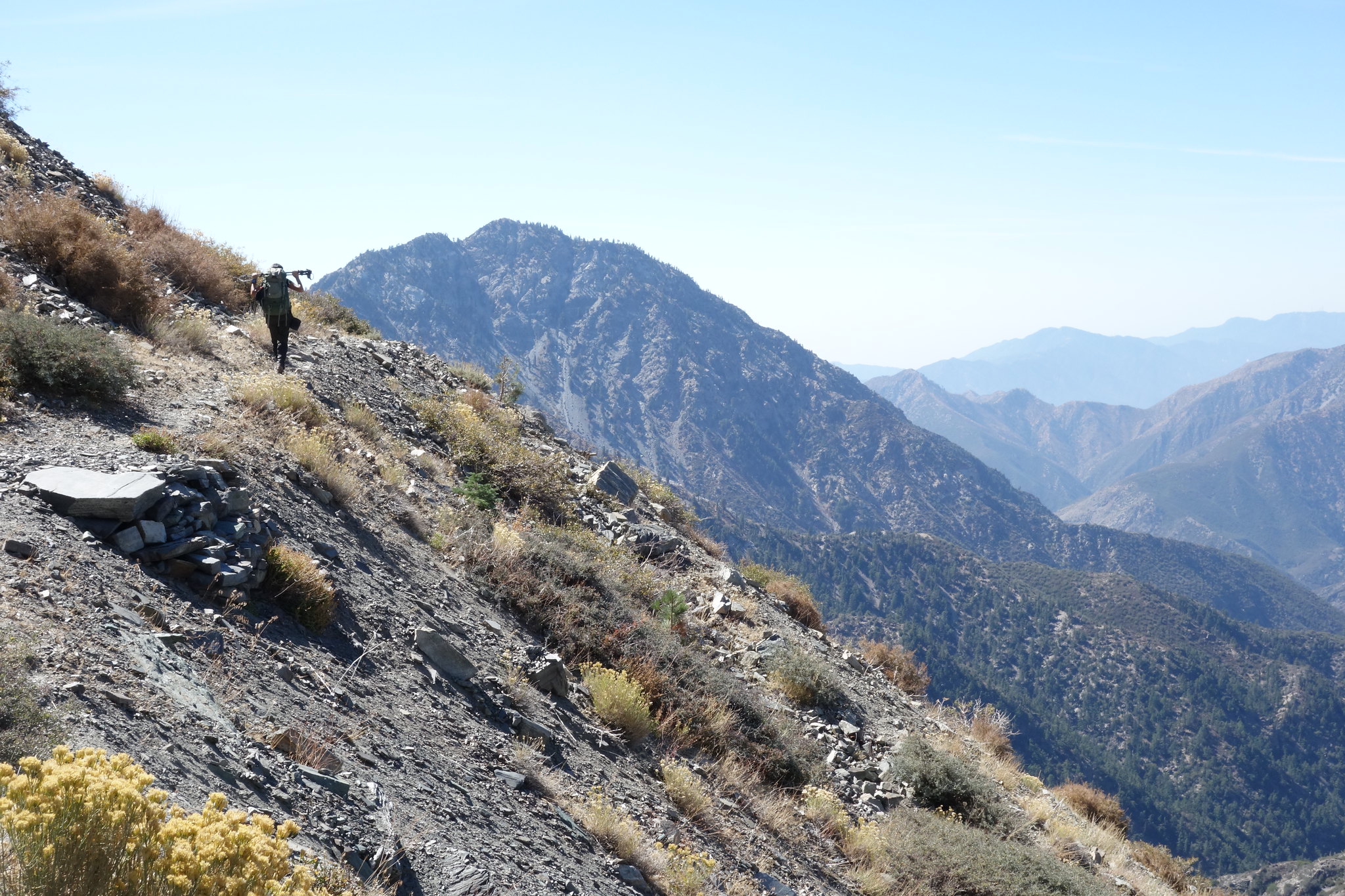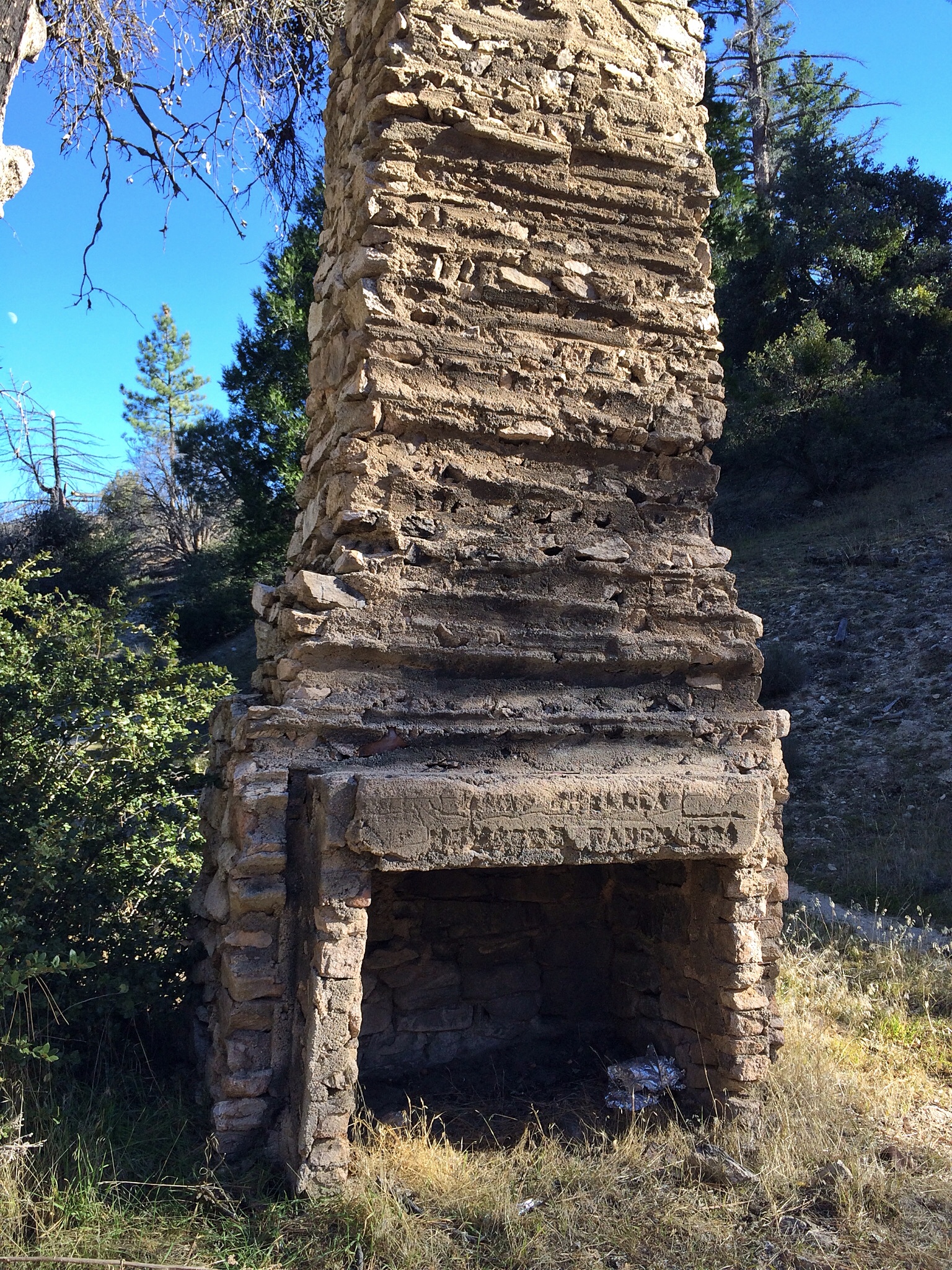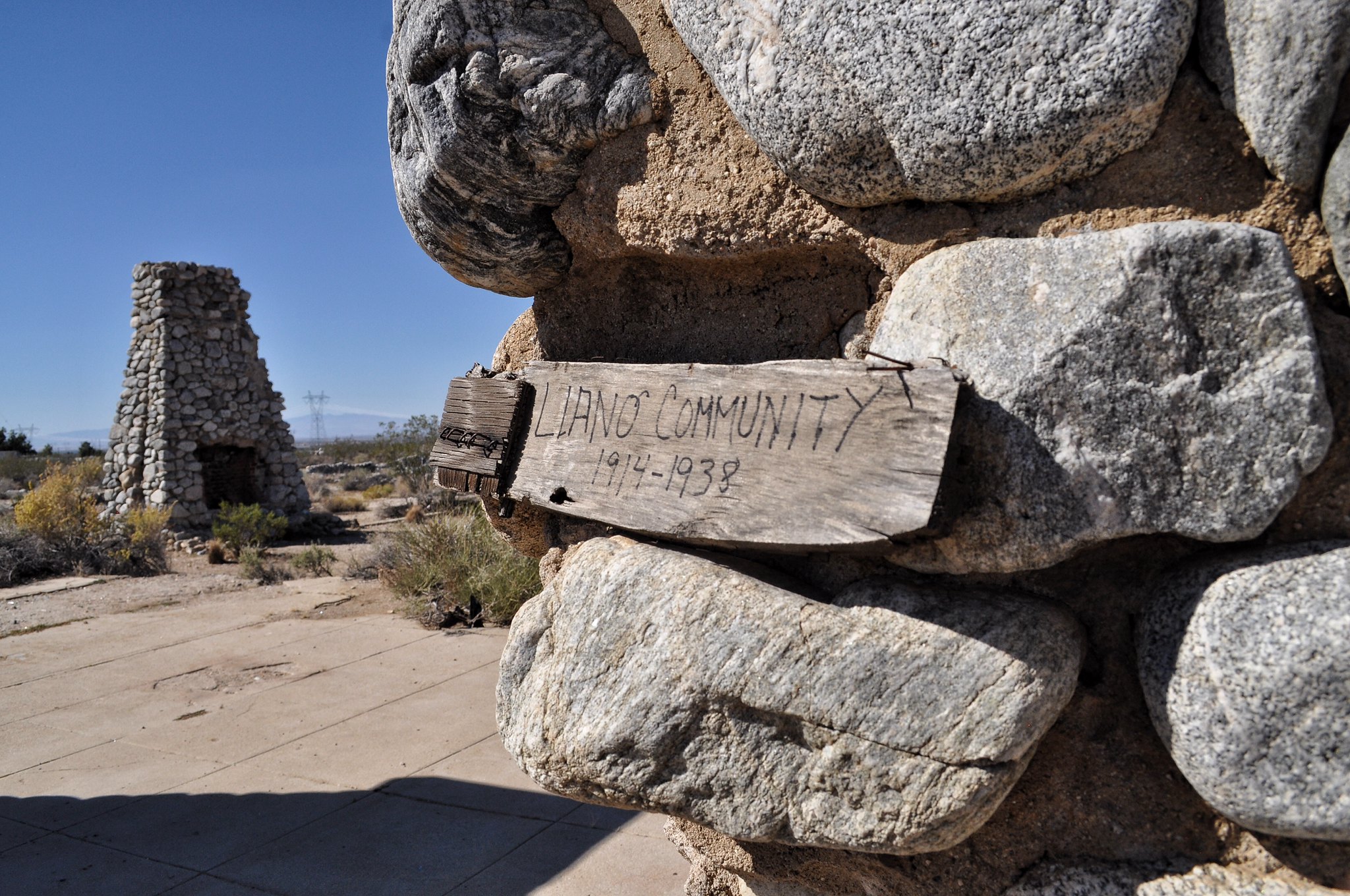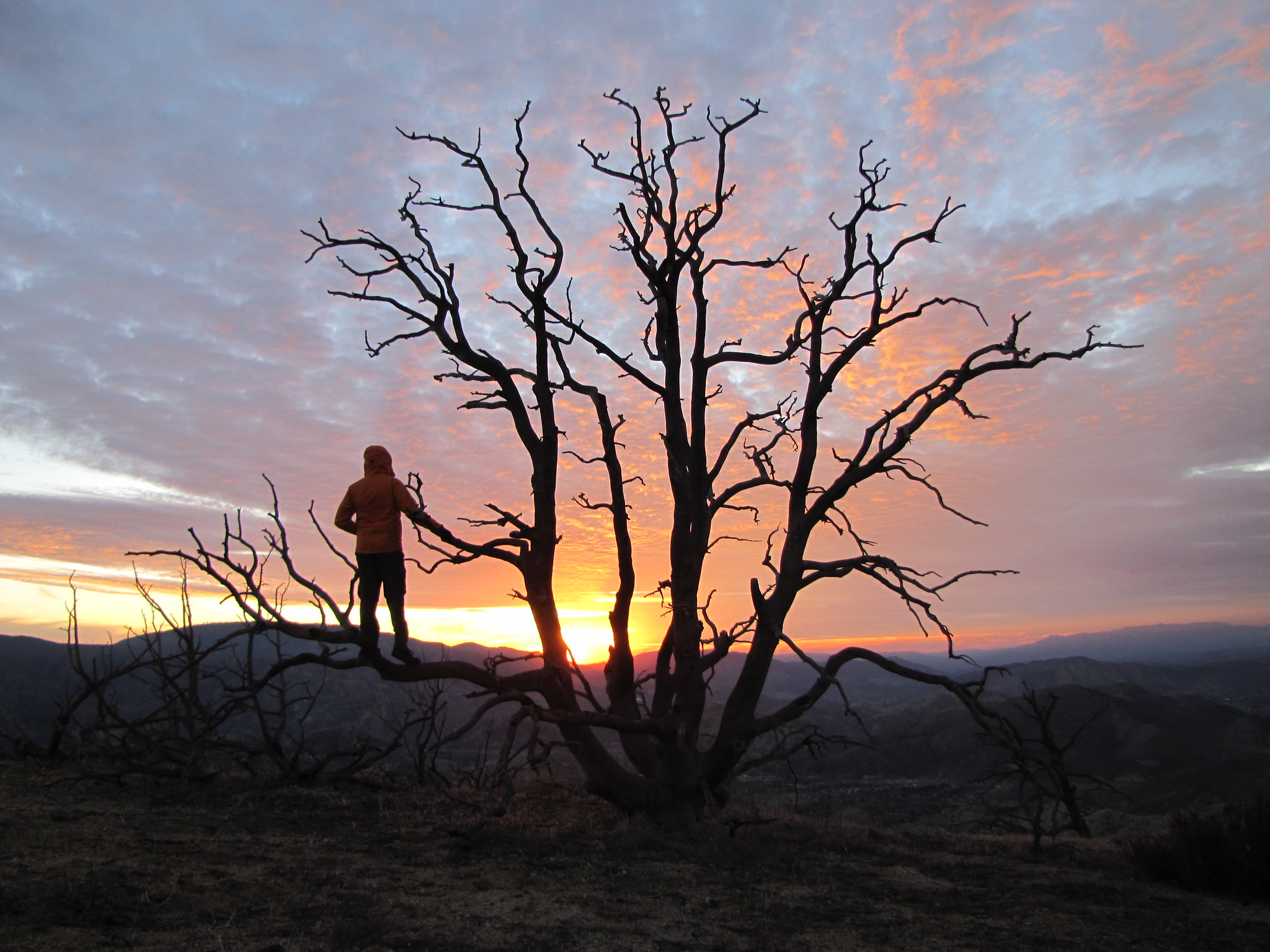Winston Peak
The high country of the San Gabriels are richly forested, dotted with pines and boulders in which panoramic vistas are offered of the surrounding peaks and canyons. Winston peak is no exception to this kind of majestic scenery. However, for over a century this mountain has harbored a dark past, where there had been a cairn to commemorate a man’s life lost to nature.
 My silhouette from Cloudburst Summit. Photo by Jeremy Boggs
My silhouette from Cloudburst Summit. Photo by Jeremy Boggs
Winston Peak (7,502 ft) is a high point on a ridge by the same name in the beautiful high country of the San Gabriel Mountains near the Mount Waterman Ski Area. The hike starts from a small paved pull out along part of the Angeles Crest Highway called Cloudburst Summit (itself at 7,018 feet).
 Boulders and pines cover the mountainside. Winston Peak Trail heads straight to the summit, reaching the peak after 2/3 of a mile
Boulders and pines cover the mountainside. Winston Peak Trail heads straight to the summit, reaching the peak after 2/3 of a mile
 A white-headed woodpecker. Soon these pines will see wintry conditions.
A white-headed woodpecker. Soon these pines will see wintry conditions.
1893
L.C. Winston, an early Pasadena settler and lawyer, had gone off to the mountains with two of his friends on a hunting trip. They packed up all their supplies in three burros and camped out at Buckhorn canyon. After a few days, a snow storm rolled in, prompting them to pack up and head home. Winston and his friend went to retrieve their burros, but somehow they got separated. They searched for Winston for two days to no avail so they then returned to the city for help. Some of the best mountaineers in town were sent for search and rescue including Louie Newcomb. The mountains were thoroughly searched for months on end but no signs of Mr. Winston…
A disturbing discovery, 1894
Nearly a year later, a young man was out hunting for deer in Little Rock Creek when he spotted what appeared to be a man in an overcoat sleeping next to a log. He approached the man and was horrified to realize that it was a corpse: its legs detached some distance away but the bones of the feet were still encased in the shoes. A heavy overcoat was carefully wrapped around the trunk of body, even his hat remained on his skull with hair and beard still clinging on the skin….
Later an investigation showed that the remains were undoubtedly Mr. Winston’s as they found a pipe and knife with his name engraved on them. A party was called on to retrieve the body to finally bring him home and a cairn was placed to mark the place.
In the end, Winston met his demise from his own lack of direction and navigation. A few years before his death he had endured two days without food from being lost around the same camp.
This mountain has seen many more people take in its beauty and delights since then. It’s history is an important part in remembering that man cannot overcome nature. We can only live with it.
 Timeless Sunset over and ever changing landscape. Passages of time just as beautiful and mysterious as the life itself.
Timeless Sunset over and ever changing landscape. Passages of time just as beautiful and mysterious as the life itself.
This entire story is from History of Pasadena by Hiram Reid, 1895. I’ve included the excerpt below:
LOST IN THE MOUNTAINS.
November 18, 1893, L. C. Winston, Esq., was lost in the mountains north of Pasadena during a snow storm, and perished alone, his body not being found, notwithstanding the best efforts of experienced search parties, until by merest accident about nine months afterward. Mr. Winston was one of the earliest settlers here, even before the colony, and had been a lawyer and notary public in Pasadena for many years; while his wife had been a teacher in the public schools much longer than any other person. Hence his loss and death in the mountains was perhaps the most notable calamity in the entire history of the settlement; and I glean from newspaper reports at the time a resume of particulars of the dreadful case. He was out on a hunting and health trip, in company with Charles Brown of Pasadena and Palmer Reed of Sierra Madre. And now I quote from the Pasadena Star of November 23, 1893:
“The facts regarding the affair, as related by Messrs. Brown and Reed, are as follows : About three weeks ago these two gentlemen and Mr. Winston went over into the mountains on a hunting and pleasure trip, taking along plenty of provisions and other supplies, packed on three burros. They made their main camp in a cabin at a point about six miles east of Pine Flats, called Chillao, but after a time moved on six miles farther eastward and camped in Buckhorn Canyon, one of the tributaries of Rock creek, which runs into the desert north of the Sierra Madre range. Mr. Reed, who is a resident of Sierra Madre, took one or two carrier pigeons with him and one of them arrived home a week ago to-day, bearing the message that all the party were in camp in Buckhorn Canyon, and all well.
“The next morning (Friday) it began to snow and blow, and the three men immediately made preparations to pack up and start for home. While Reed got breakfast, Winston and Brown went out to hunt up the burros. They kept together for a short distance and then separated, the former going west and the latter southeast. Brown soon found the animals and according to agreement gave a signal by hallooing. He kept this up until he came back to camp, but there was no response. The two men then fired their guns and blew a tin horn they carried, keeping the signals going until about eleven o’clock, but getting no response.
“They then concluded that Mr. Winston had kept on in the direction he had started, expecting to find the burros at Chillao cabin, so they packed up and left for that point, arriving about six o’clock in the evening. When they pulled out of Buckhorn Canyon the snow was still falling and had already attained a depth of nearly two feet. Farther west, however, the fall had been lighter and did not obscure the trail.
“No signs of Winston were found at the cabin and the two men spent an anxious night. Saturday and Sunday they spent in searching for their lost companion, but to no avail, and Monday morning they packed up and started for home, arriving at Sierra Madre Tuesday night at ii o’clock, all worn out and distressed. Brown was hardly able to return this morning with the rescuing party, but he did go.
“Mr. Brown says that on Tuesday night last Mr. Winston became confused as to his location while out hunting and was obliged to remain out all night and wait for daylight to get his bearings. It is a very rough country, and in a blinding storm it is easy to lose all ideas of place and distance. Mr. Winston had a narrow escape some years ago not far from the same camp, when he was out two days and two nights without food.”
That was Thursday. Then Friday’s paper said:
“Two of the best mountaineers in town, Jud Blick and Lew Newcome, started up the toll trail immediately upon the return of Mr. Winston’s companions, Messrs. Brown and Reed, yesterday morning ; and this morning another party composed of Palmer Reed, Charley Winston, Charley Brown, Cal Hartwell, Mart. Weight and Frank Grant, left for the summit in one of Wiley & Greely’s teams, proposing to take pack animals at the foot of the trail.”
The next week the paper reported:
“Two of the men who have been in the mountains since last Wednesday and Thursday hunting for L. C. Winston returned about noon today after more provisions. They are Charley Winston, a half brother of Lang, and Jud Blick. The returned men bring no tidings of Winston that affords the least reliable clue as to his whereabouts or his condition. Charley Winston went on home soon after arriving, to prepare several pack loads of supplies, with which he will start back tonight. Jud will go back in a couple of days with another supply.”
Then the Star of December 14, said :
“Messrs. Chas. Brown, Jos. and Grant Griswold, John Hartwell, A. L,effler and Reney returned yesterday afternoon from their expedition up the Arroyo Seco in quest of L,. C. Winston, bringing no encouraging news whatever. They made a very thorough search of the main and tributary canyons as far up as the divide between the headwaters of the Arroyo and the Tejunga, with side trips down the Tejunga and west branch of the San Gabriel, but absolutely no trace of the missing man could be found. The region about Barley Flats was explored also Another small party, headed by one of Mr. Winston’s brothers, has gone over to Chillao and beyond, and they will continue the search in that direction.”
The next report is of date December 20, and says:
“Another party has been made up to go in search of L. C. Winston, consisting of John Hartwell, Joe and Grant Griswold and Charley Brown. IvOU Newcombe is already over on the Tejunga and the others will join him there and all will establish a camp at Chillao, where there is a cabin. They have all been in former searching parties and know the mountains thoroughly. They will go well prepared with provisions and clothing, so that they can weather storms. Those who are not familiar with the trails and canyons of the range should by no means venture into the mountains at this time of year. It is dangerous work for experienced mountaineers, and for others the danger is vastly increased.”
These brief quotations from long articles will show what deep interest was felt and great effort made to find the missing man, dead or alive. Yet not the least clue was found, or heard of him, until the following account appeared, dated Los Angeles, August 16, 1894:
“On Tuesday a young man who was hunting in the Little Rock Creek Canyon found the body of the lost man, L. C. Winston. Little Rock Creek Canyon runs into the Sierra Madre mountains up to Mount Waterman, which is the divide between the San Gabriel Canyon and the Little Rock Creek Canyon. A party consisting of J. B. Martin, W. A. Pallette, R. B. Burns, C. E. Meiggs, Fred Lees and Charles Brossart were camping; and on Tuesday Meiggs took his rifle and went up a little tributary canyon looking for deer. Losing his bearings, he climbed upon a high rock and looked about. As he clambered down he saw what appeared to be a man in an overcoat sleeping alongside a log. As he approached he was horrified to see that the man was dead, the legs being detached from the body, both being some distance away. The bones of the feet were still encased in the shoes. The trunk was wrapped in a heavy overcoat, which was closely buttoned and belted. The hat was on the skull, the hair and beard still clinging to the tightly drawn parchment-like skin. An investigation showed that the remains were undoubtedly those of Winston, for a cob pipe bearing his name, a bowie knife, also engraved, his watch, a match box and other articles were found in the pockets of the clothes. The body is twelve miles from the nearest house and can only be reached by pack-train in about two days’ travel. The campers left the body where it was found, marking the locality so that it could be easily found again, and started at once for the city, arriving early this morning and going at once to Pasadena, where the Winston family was notified. A party of friends of the dead man started at once for the little Rock Creek Canyon, and will bring back the remains as soon as possible.”
“On Tuesday morning, August 16, about eight o’clock, policeman A. O. Bristol was informed by Ernest Meiggs of East Los Angeles that he had found Winston’s body, and had come to report the matter. Bristol at once went with him to the residence of W. S. Wright, Esq., and Mrs. Winston with the information. And by noon train Mr. Wright, Mr. Meiggs and Peter Steil started to recover and bring in the body. They had to go by S. P. Railroad to Palmdale, thence by team twenty-two miles to Pallette ranch on the north side of the mountains, thence by pack mules about twenty miles up Rock Creek Canyon. The spot where the body lay was five or six miles from the camp that Winston had started from, when he got bewildered and lost in the snow storm ; and it is likely that some of the search parties sent out eight or nine months before had passed within fifty yards of the body without discovering it. August 20, Messrs. Wright and Steil returned to Pasadena with the remains. August 21, Coroner Cates held an inquest, with the following jurymen : Ed. lyockett, Thos. Banbury, Samuel Weight, E. A. Mote, B. A. Sparks, Thos. Grimes, Geo. Swerdfiger, S. O. McGrew, and G. W. Benedict, foreman. In his testimony before the jury, W. S. Wright said : “The range on which the body was found is estimated to be next highest to Baldy in the Sierra Madre range. It is two or three miles north of Waterman range, and is in section 18, township 3, north, of range 10 west.” They buili a cairn or monument of stones to mark the place, and named it Winston mountain.
Mr. Winston had long been an honored member of the Ancient Order of United Workmen, and they conducted his burial. They also paid his life certificate of $2,000 to his widow.”






